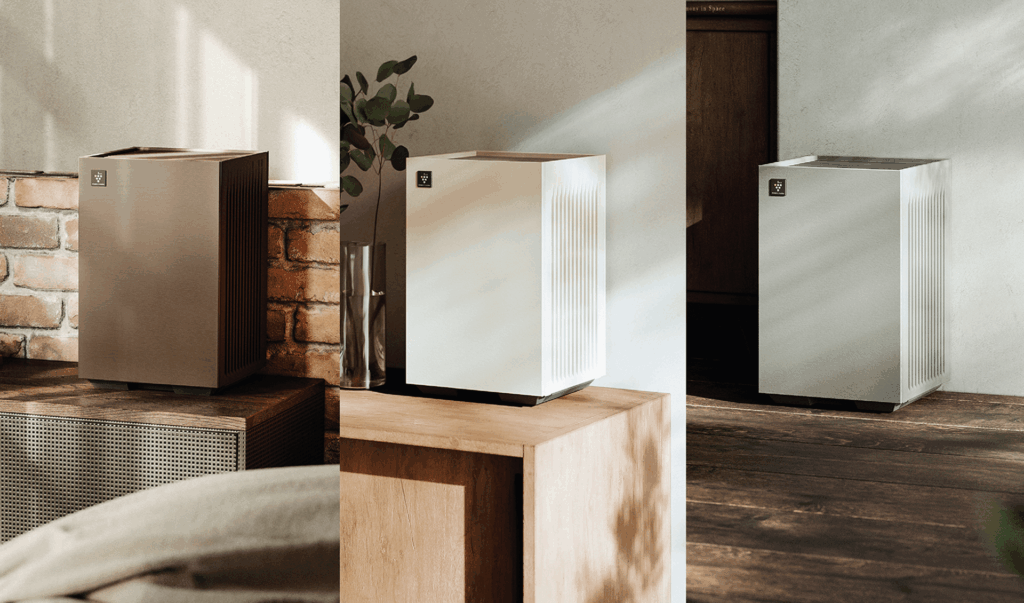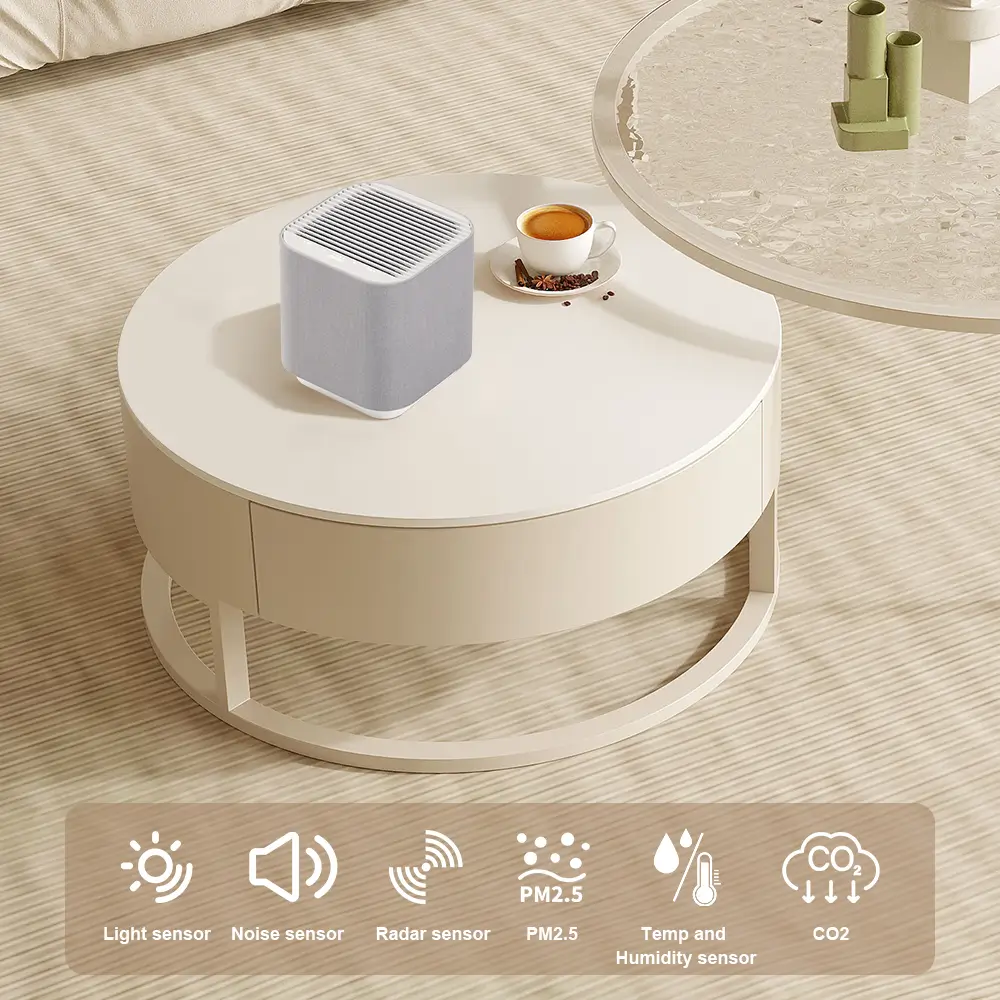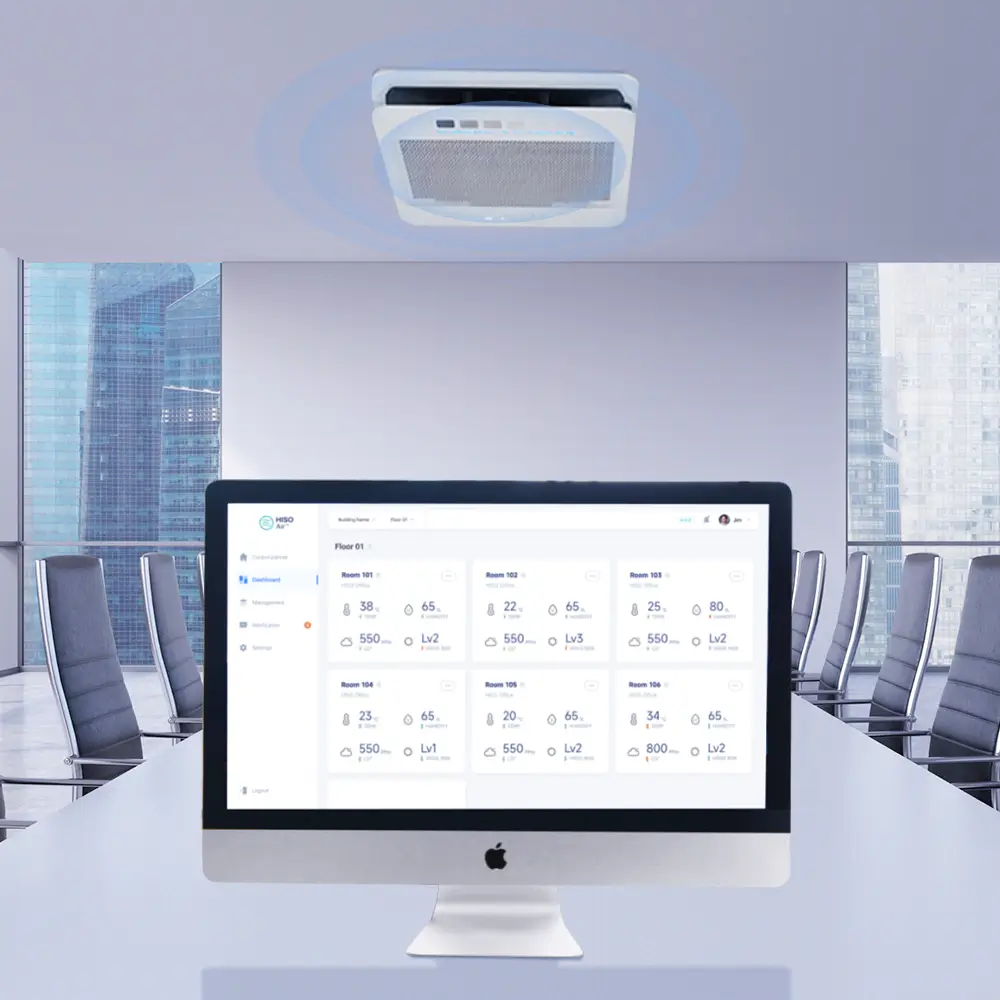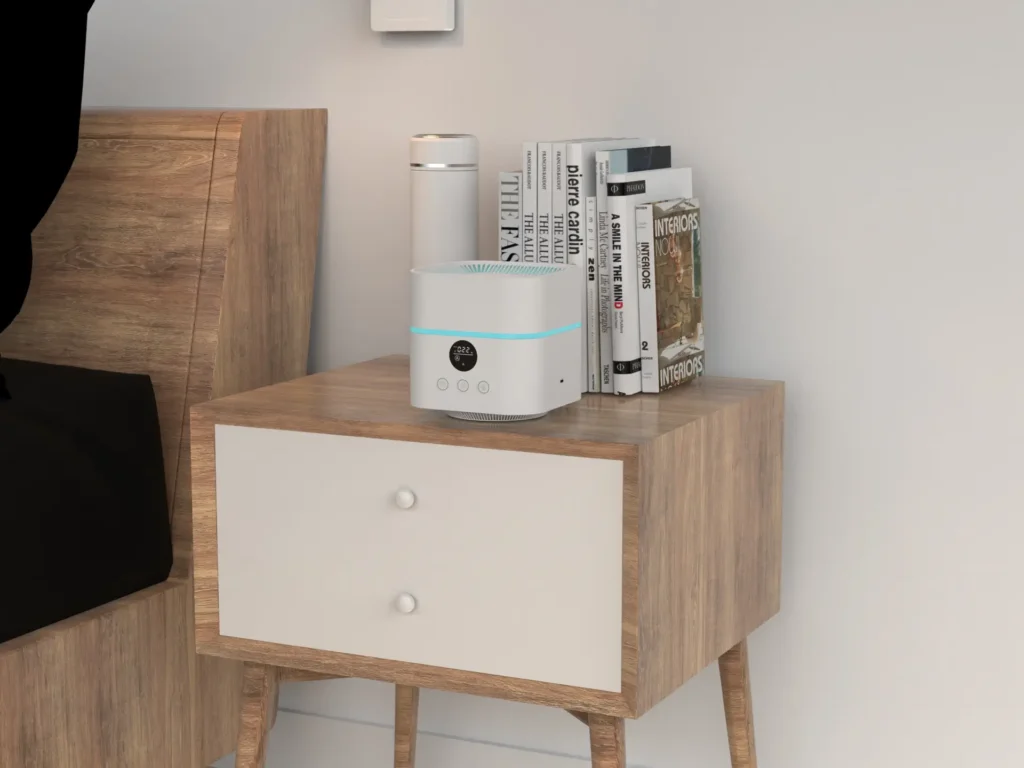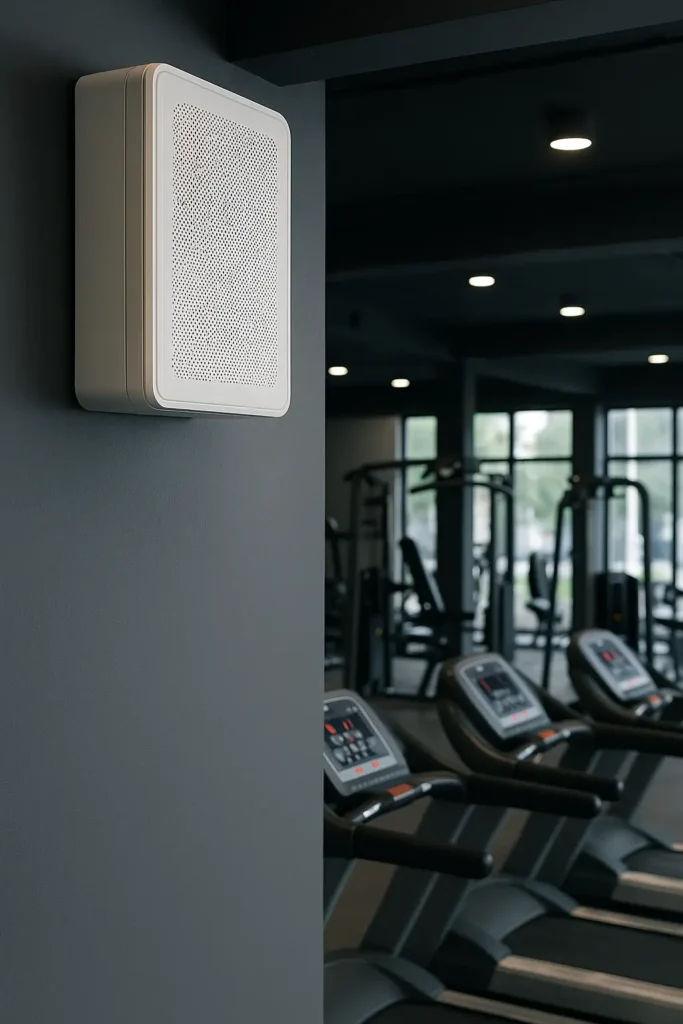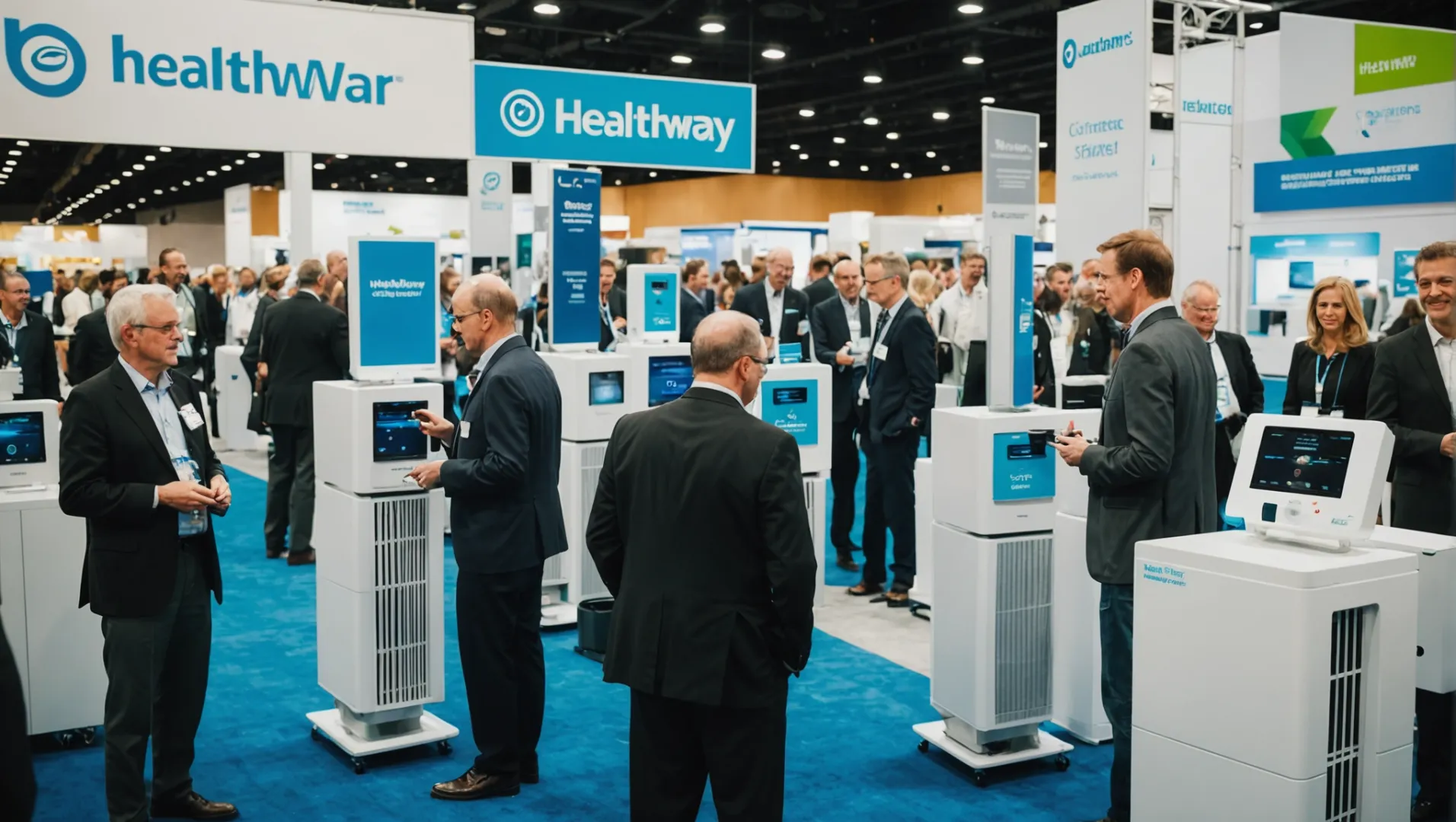
Trovare un produttore di purificatori d'aria affidabile negli Stati Uniti può sembrare di cercare un ago in un pagliaio, soprattutto quando si tratta di garantire una buona qualità dell'aria in casa.
Per trovare produttori di purificatori d'aria affidabili negli USA, esplorate aziende come Healthway e Austin Air. Partecipate a fiere come AHR e IHS, dove molti produttori presentano i loro prodotti. Anche se le opzioni sono limitate, queste fonti forniscono soluzioni affidabili.
Ma non preoccupatevi! Anche se il panorama può sembrare ristretto, ci sono molte informazioni preziose che possono guidare il vostro viaggio verso un'aria più pulita. Approfondiamo le dinamiche della produzione di depuratori d'aria negli Stati Uniti.
Healthway e Austin Air sono gli unici produttori statunitensi.Falso
Sebbene siano importanti, esistono altri produttori più piccoli.
Perché è difficile trovare produttori di depuratori d'aria statunitensi?
Nonostante l'aumento della domanda, i produttori locali di purificatori d'aria negli Stati Uniti rimangono scarsi e difficili da localizzare.
I produttori statunitensi di purificatori d'aria sono limitati a causa degli elevati costi di produzione e della dipendenza da componenti importati, principalmente dalla Cina.
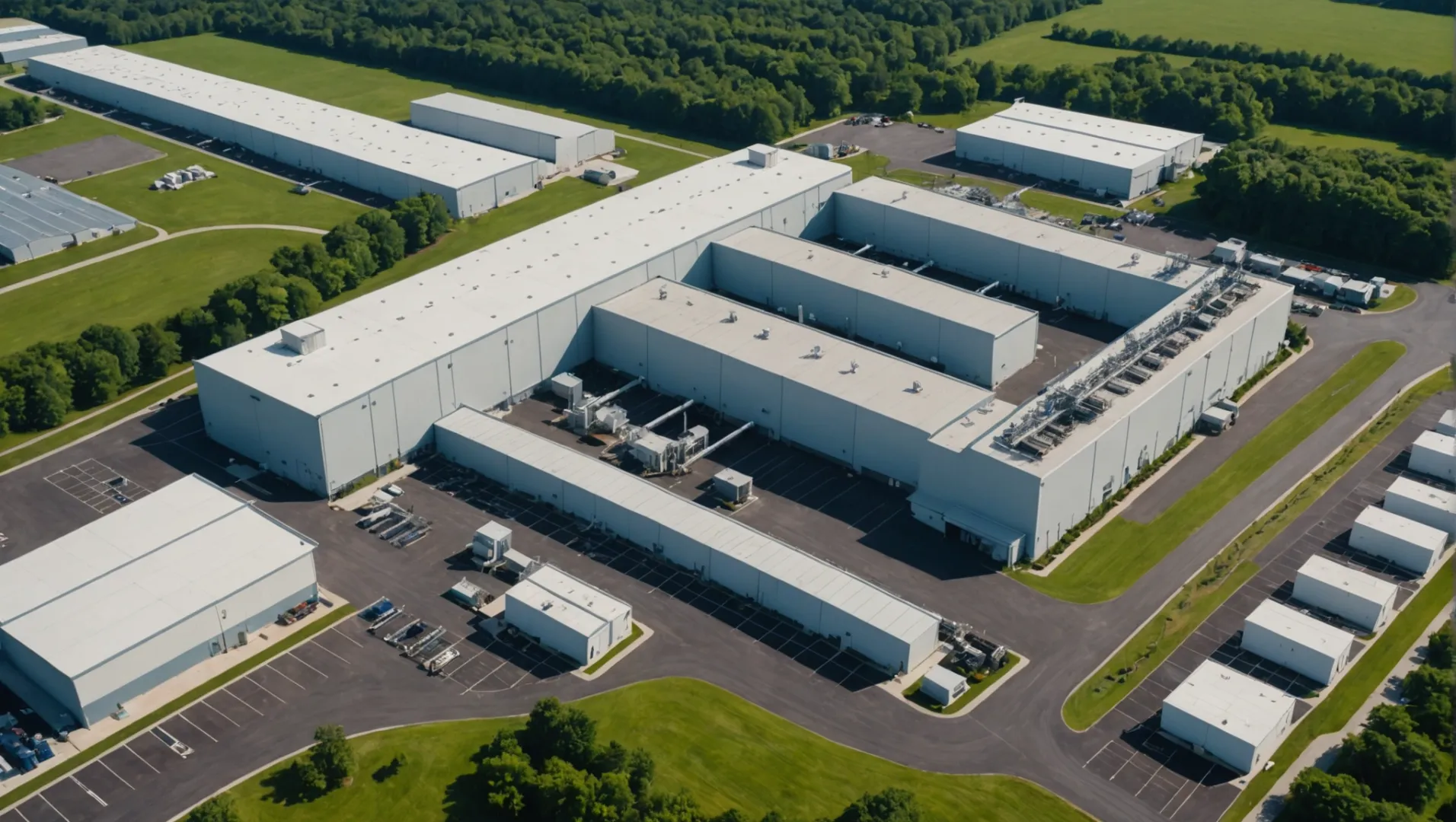
Numero limitato di produttori
Negli Stati Uniti, il numero di produttori di purificatori d'aria è notevolmente ridotto. I principali operatori come Healthway e Austin Air dominano il panorama, ma i loro prodotti spesso riflettono una tecnologia più vecchia e prezzi più elevati. Queste aziende si rivolgono principalmente a clienti commerciali, rendendo le loro offerte meno accessibili al consumatore medio.
Dipendenza dalle importazioni cinesi
La sfida principale che i produttori statunitensi devono affrontare è la dipendenza dai componenti importati. Parti essenziali come sistemi di ventilazione, filtri e materiali come plastica e metallo provengono prevalentemente dalla Cina. Questa dipendenza non solo aumenta i costi di produzione, ma limita anche l'innovazione a causa dei vincoli logistici e delle potenziali barriere commerciali.
Impatto delle politiche commerciali
Le politiche commerciali hanno ulteriormente complicato lo scenario. L'imposizione di tariffe durante le passate tensioni commerciali ha aumentato i costi e i rischi associati all'importazione di componenti dalla Cina. Questa situazione potrebbe evolversi con il mutare delle politiche, ma rimane un deterrente significativo per l'espansione della produzione nazionale.
Il ruolo delle fiere
Per chi cerca di individuare i produttori statunitensi, le fiere come AHR Expo e IHS sono preziose. Questi eventi presentano un'ampia gamma di prodotti di produttori nazionali e internazionali, offrendo una piattaforma per scoprire e fare rete con potenziali partner statunitensi. Partecipare a questi eventi1 potrebbe offrire approfondimenti sulle ultime tendenze del mercato e sulle opportunità di collaborazione.
Potenziali cambiamenti nelle tendenze di produzione
In prospettiva, si ipotizza che alcuni produttori cinesi possano trasferire le loro attività negli Stati Uniti a causa delle mutevoli dinamiche commerciali. Questo potrebbe potenzialmente portare a un aumento della disponibilità e della competitività dei depuratori d'aria prodotti negli Stati Uniti in futuro.
I produttori statunitensi di purificatori d'aria si affidano a componenti importati.Vero
Si riforniscono principalmente di componenti come i filtri dalla Cina, facendo lievitare i costi.
Le politiche commerciali non hanno alcun impatto sulla produzione di depuratori d'aria negli Stati Uniti.Falso
Le tariffe aumentano i costi e i rischi, complicando le importazioni di componenti.
Cosa distingue Healthway e Austin Air?
Sebbene il mercato dei purificatori d'aria sia saturo, Healthway e Austin Air offrono caratteristiche uniche che li distinguono.
Healthway e Austin Air si distinguono per una tecnologia di filtrazione superiore e per l'impegno a produrre negli Stati Uniti. Nonostante l'utilizzo di alcuni componenti importati, i loro prodotti sono caratterizzati da qualità e longevità. La loro presenza alle fiere di settore evidenzia ulteriormente il loro status di marchi affidabili nel settore dei purificatori d'aria.
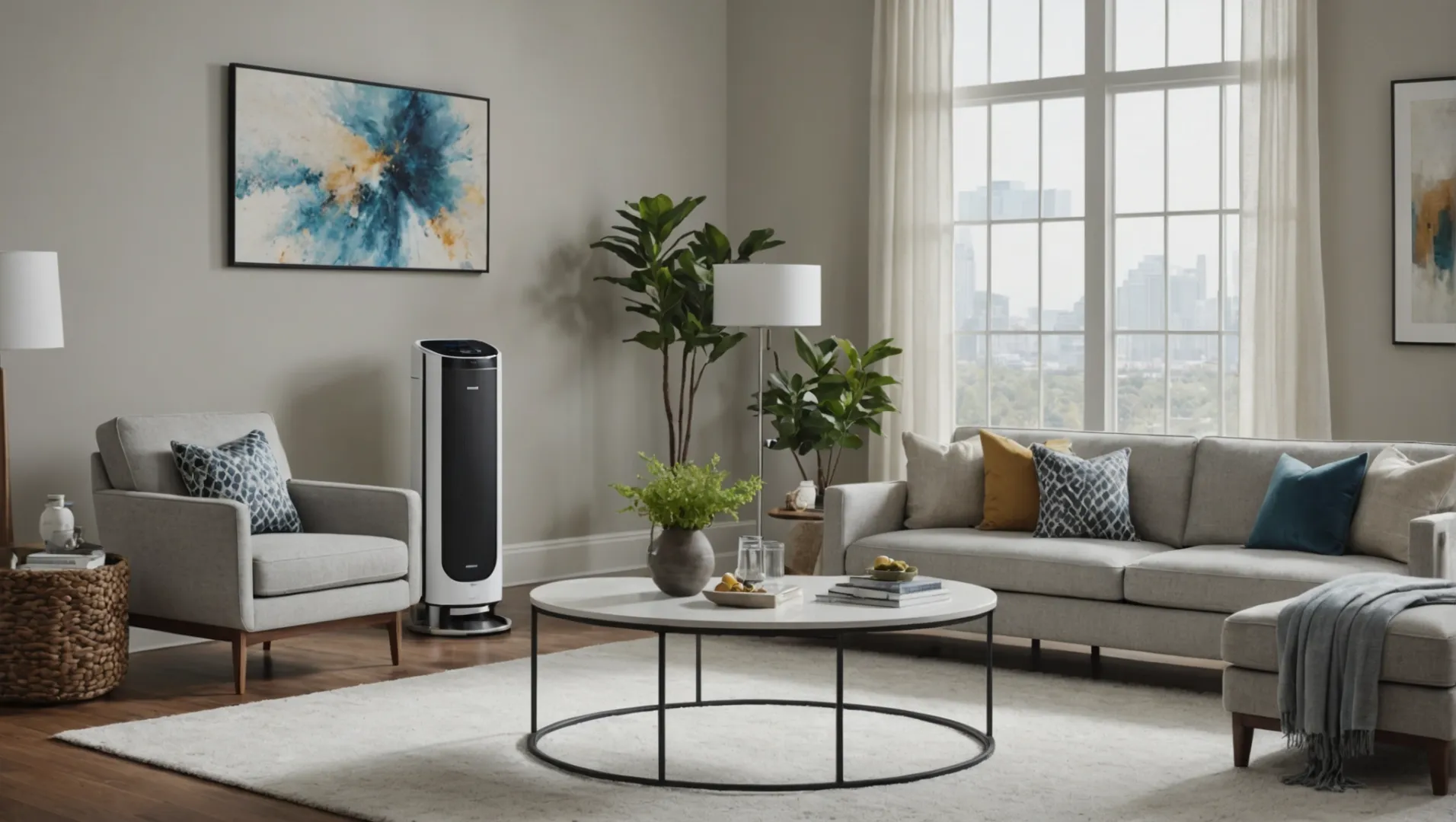
Innovazione e tecnologia
Healthway e Austin Air sono riconosciute per la loro dedizione all'innovazione nella tecnologia di purificazione dell'aria. Healthway2 impiega sistemi di filtrazione avanzati, come ad esempio DFS (Disinfecting Filtration System), che cattura particelle ultrafini, batteri e virus in modo più efficace rispetto ai sistemi tradizionali. HEPA filtri. Questa tecnologia proprietaria li distingue da molti concorrenti che si affidano a metodi di filtrazione standard.
Austin Air, invece, si concentra sulla produzione di unità robuste con filtri di lunga durata. I loro filtri combinano filtri di grado medico HEPA con il carbone attivo, per affrontare un'ampia gamma di contaminanti presenti nell'aria. Questo approccio a doppia filtrazione è particolarmente interessante per i consumatori che cercano soluzioni complete per la qualità dell'aria.
Impegno per la produzione statunitense
Entrambe le aziende sottolineano il loro impegno a produrre negli Stati Uniti. Nonostante l'approvvigionamento di alcuni componenti a livello internazionale, assemblano e testano i loro prodotti negli Stati Uniti. Questa produzione locale non solo sostiene l'occupazione interna, ma garantisce anche processi di controllo della qualità rigorosi. Per i consumatori interessati a sostenere le industrie locali, questo è un elemento di differenziazione significativo.
Partecipazione a fiere di settore
Healthway e Austin Air presentano regolarmente i loro prodotti alle principali fiere di settore, come AHR e IHS. Questi eventi sono fondamentali per i produttori per dimostrare le loro ultime innovazioni e per entrare in contatto con potenziali clienti commerciali. La loro partecipazione attiva a queste fiere sottolinea il loro ruolo di leadership nel settore e fornisce trasparenza sui loro processi di produzione e sull'efficacia dei prodotti.
Soddisfazione e reputazione dei clienti
Entrambi i marchi hanno coltivato una solida reputazione per la soddisfazione dei clienti. Le testimonianze sottolineano spesso la durata e l'efficacia dei loro prodotti nel migliorare la qualità dell'aria interna. Sebbene si rivolgano principalmente a clienti commerciali a causa dei prezzi più elevati, l'investimento è giustificato da prestazioni e durata superiori.
Comprendendo i fattori che contraddistinguono Healthway e Austin Air, i consumatori possono prendere decisioni informate quando scelgono un purificatore d'aria in linea con le loro esigenze e i loro valori. Con l'evolversi delle dinamiche di mercato, questi marchi continuano a mantenere elevati standard di qualità e innovazione.
Healthway utilizza la tecnologia DFS per la purificazione dell'aria.Vero
La tecnologia DFS cattura particelle ultrafini, batteri e virus.
Austin Air non utilizza filtri HEPA nei suoi prodotti.Falso
Austin Air combina filtri HEPA di grado medico con filtri a carbone attivo.
In che modo le fiere aiutano a trovare i produttori?
Le fiere sono fondamentali per le aziende che cercano produttori, in quanto offrono un accesso diretto ai leader del settore e alle innovazioni.
Fiere come AHR e IHS offrono una piattaforma per incontrare numerosi produttori, valutare nuove tecnologie e stabilire partnership. Questi eventi sono essenziali per identificare potenziali fornitori, comprendere le tendenze del settore e creare reti all'interno della comunità produttiva.
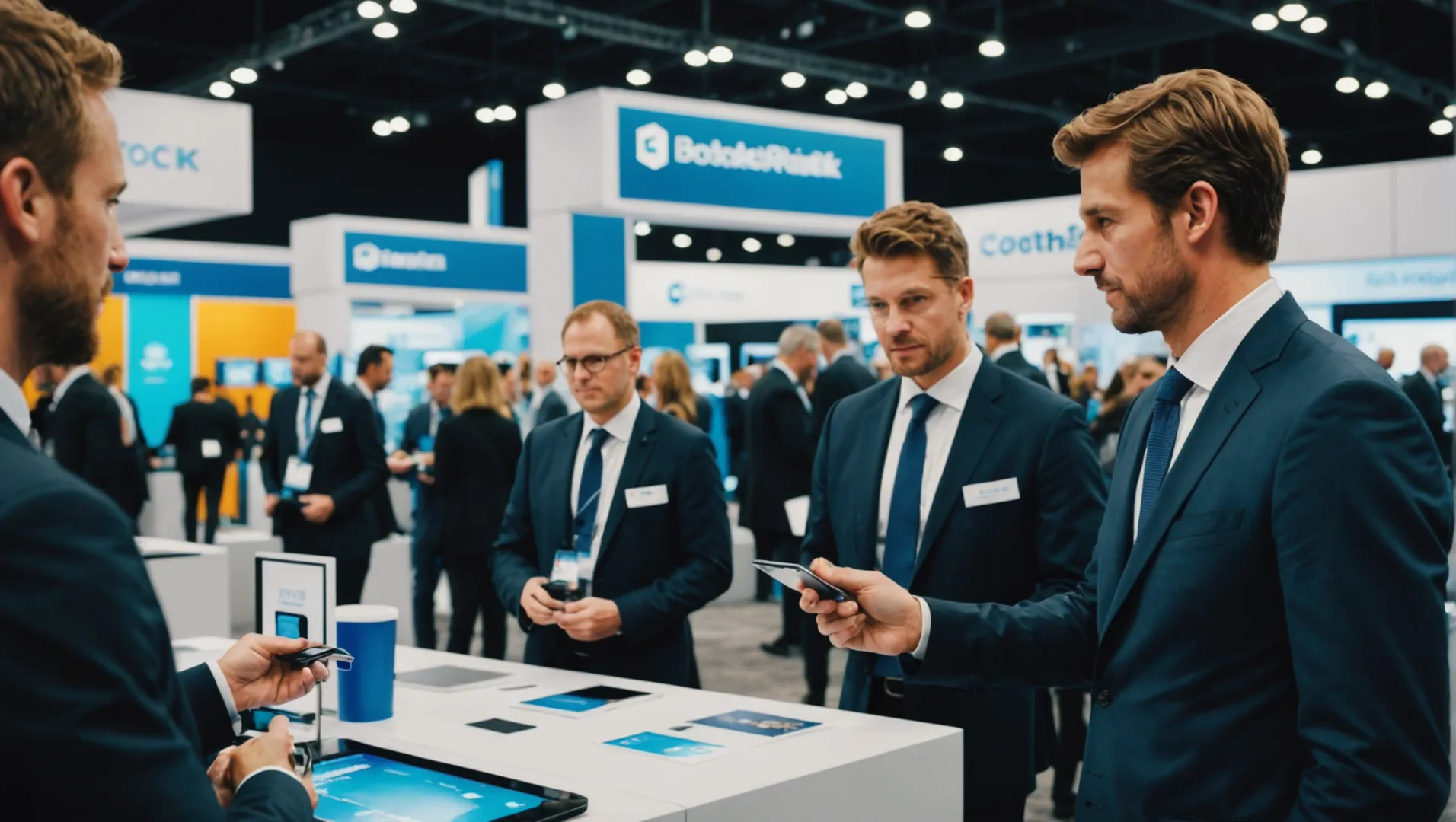
Il ruolo delle fiere nella creazione di reti industriali
Le fiere sono un punto di incontro per i professionisti del settore che possono entrare in contatto, condividere le proprie conoscenze e discutere di potenziali collaborazioni. Eventi come AHR e IHS sono particolarmente significativi perché riuniscono sotto lo stesso tetto una vasta gamma di produttori e fornitori. Per le aziende che cercano produttori di depuratori d'aria negli Stati Uniti, queste fiere offrono l'opportunità di confrontarsi direttamente con i rappresentanti delle aziende, di fare domande sulle offerte di prodotti e di negoziare accordi.
Valutazione delle offerte dei produttori
Alle fiere, le aziende possono confrontare le offerte dei diversi produttori. Questo confronto immediato aiuta a valutare la qualità dei prodotti, i progressi tecnologici e l'efficacia dei costi. Per esempio, un'azienda interessata a rifornirsi di purificatori d'aria può valutare i modelli di Healthway e Austin Air rispetto ad altri concorrenti internazionali per vedere come si posizionano in termini di prestazioni e prezzo.
Identificare le tendenze emergenti
Questi eventi forniscono anche indicazioni sulle tendenze e le tecnologie emergenti nel settore manifatturiero. Ad esempio, alla luce delle recenti politiche commerciali, alcuni produttori cinesi potrebbero prendere in considerazione la possibilità di trasferire le loro attività negli Stati Uniti, offrendo opzioni potenzialmente più convenienti in futuro. I partecipanti possono conoscere questi cambiamenti strategici e pianificare di conseguenza le loro strategie di approvvigionamento.
Costruire relazioni a lungo termine
Partecipare alle fiere non significa solo trovare soluzioni immediate, ma anche costruire relazioni a lungo termine. Stabilire un rapporto di fiducia con i produttori può portare a un servizio più personalizzato, a migliori accordi sui prezzi e a un'assistenza continua.
| Vantaggi delle fiere | Descrizione |
|---|---|
| Opportunità di networking | Incontrare i leader del settore e i potenziali partner. |
| Confronto tra i prodotti | Valutare più prodotti in tempo reale. |
| Approfondimento sulle tendenze | Rimanete aggiornati sulle innovazioni del settore. |
| Costruzione di relazioni | Sviluppare partnership forti e a lungo termine. |
Partecipando alle fiere, le aziende possono aumentare in modo significativo le possibilità di trovare il produttore giusto, acquisendo al contempo preziose informazioni sulle dinamiche future del mercato. Comprendere i vantaggi delle fiere3 è fondamentale per le aziende che si muovono nel complesso panorama della produzione globale.
Le fiere aiutano a individuare le tendenze produttive emergenti.Vero
Le fiere rivelano le nuove tecnologie e i cambiamenti del mercato, aiutando la strategia.
La partecipazione alle fiere garantisce la ricerca del miglior produttore.Falso
Sebbene siano vantaggiose, le fiere non assicurano di trovare la soluzione migliore.
Le tendenze future aumenteranno la produzione statunitense?
Con lo spostamento delle dinamiche globali, gli Stati Uniti vedranno un aumento della produzione locale di depuratori d'aria?
Le tendenze future potrebbero aumentare la produzione di depuratori d'aria negli Stati Uniti a causa di politiche commerciali, progressi tecnologici e cambiamenti nelle dinamiche produttive globali.
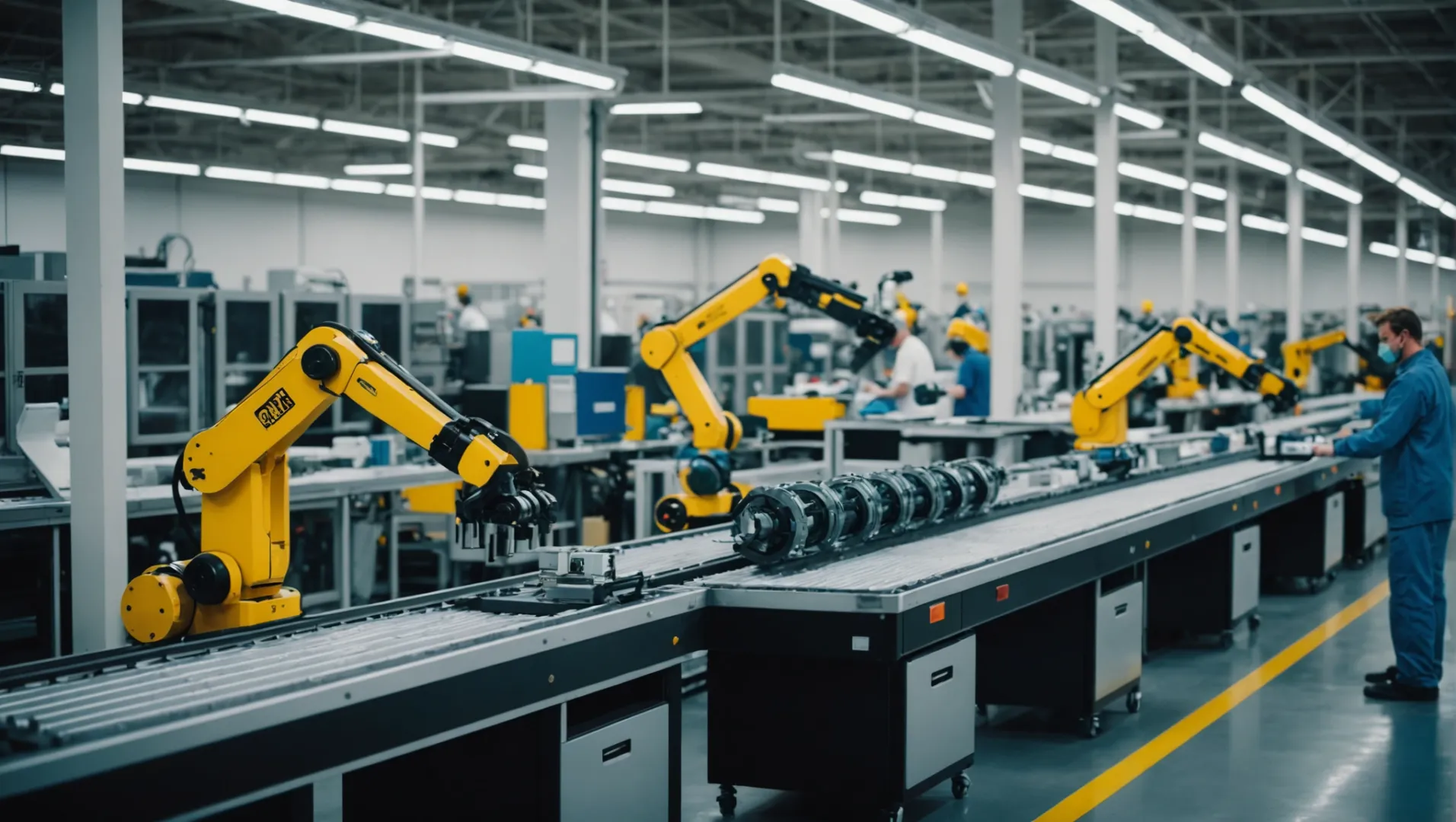
Impatto delle politiche commerciali sulla produzione
Le politiche commerciali, in particolare le tariffe, hanno un impatto significativo sul luogo di produzione dei prodotti. Con aumento delle tariffe4 sulle importazioni dalla Cina, alcune aziende potrebbero ritenere economicamente vantaggioso stabilire basi produttive negli Stati Uniti, il che potrebbe portare a un aumento della produzione locale.
Una potenziale tendenza futura prevede che i produttori cinesi delocalizzino le loro fabbriche negli Stati Uniti per evitare queste tariffe, come suggerito dagli esperti. Questa delocalizzazione potrebbe portare a una base produttiva statunitense più solida per i depuratori d'aria, consentendo prezzi competitivi e una maggiore disponibilità di prodotti di alta qualità.
Progressi tecnologici nella produzione
I progressi tecnologici svolgono un ruolo cruciale nell'efficienza produttiva e nella qualità dei prodotti. Con l'emergere di nuove tecnologie, i produttori statunitensi potrebbero adottare metodi di produzione più rapidi ed economici.
Ad esempio, l'integrazione dell'intelligenza artificiale e dell'automazione può snellire i processi, ridurre i costi e migliorare l'innovazione dei prodotti nelle fabbriche statunitensi. Le aziende che abbracciano questi progressi possono distinguersi in un mercato che richiede efficienza e prestazioni elevate.
| Tecnologia | Benefici |
|---|---|
| Integrazione dell'intelligenza artificiale | Ottimizza i processi di produzione |
| Automazione | Riduce i costi di manodopera |
| Stampa 3D | Accelera la prototipazione e riduce gli sprechi di materiale |
Cambiamenti nella produzione globale
I cambiamenti globali nelle preferenze di produzione suggeriscono anche un potenziale aumento della produzione statunitense. Con la crescente attenzione alla sostenibilità, la produzione locale riduce l'impronta di carbonio associata al trasporto su lunghe distanze.
Inoltre, la preferenza dei consumatori si sta gradualmente spostando verso i prodotti di origine locale, grazie alla garanzia di qualità percepita e al desiderio di sostenere le economie locali. Queste tendenze indicano un terreno fertile per l'aumento della produzione nazionale.
Conclusione
Mentre l'attuale produzione statunitense di depuratori d'aria rimane limitata, queste tendenze future presentano opportunità di crescita. La comprensione di queste dinamiche aiuta le parti interessate a prepararsi ai cambiamenti che potrebbero rimodellare il panorama del settore.
I dazi statunitensi sulle importazioni cinesi stimolano la produzione locale.Vero
I dazi rendono costosa l'importazione, incoraggiando le aziende statunitensi a produrre localmente.
L'intelligenza artificiale riduce i costi della produzione di purificatori d'aria negli Stati Uniti.Vero
L'intelligenza artificiale ottimizza i processi, riducendo i costi di lavoro e migliorando l'efficienza.
Conclusione
Sebbene le opzioni rimangano limitate, rimanere informati sui cambiamenti del settore vi aiuterà a prendere decisioni più intelligenti per le vostre esigenze di qualità dell'aria interna.
-
Scoprite le tendenze del settore e mettetevi in contatto con potenziali produttori..: Chi partecipa >>> L'AHR Expo è pensato per i professionisti HVACR di ogni segmento del settore, tra cui: Ingegneri, appaltatori, OEM, progettisti e costruttori... ↩
-
Scoprite come la tecnologia DFS supera i filtri tradizionali per un'aria più pulita..: L'Ultrafine 468 è dotato della nostra tecnologia proprietaria DFS, che intrappola ed elimina le particelle ultrafini potenzialmente dannose nel vostro ambiente. I nostri prodotti sono ... ↩
-
Scoprite come le fiere possono incrementare le vostre strategie commerciali..: Ogni fiera a cui partecipate è un'occasione per espandere la vostra rete commerciale e creare nuove relazioni d'affari, rafforzando quelle esistenti. ↩
-
Capire come le tariffe influenzano le decisioni di produzione a livello globale..: Fonte: Modello di equilibrio generale della Tax Foundation, giugno 2024. Risultati principali. L'amministrazione Trump ha imposto quasi $80 miliardi di ... ↩


